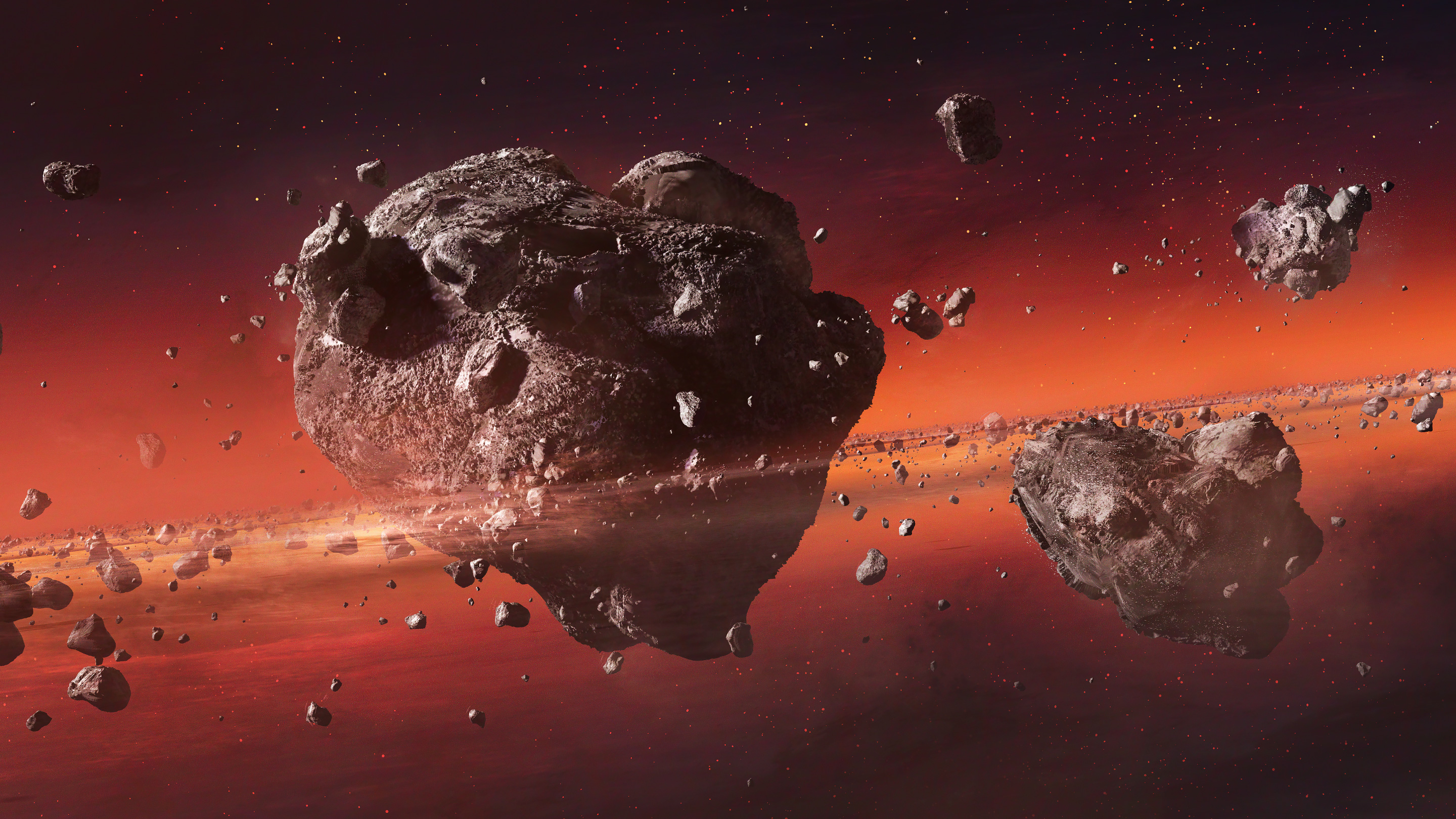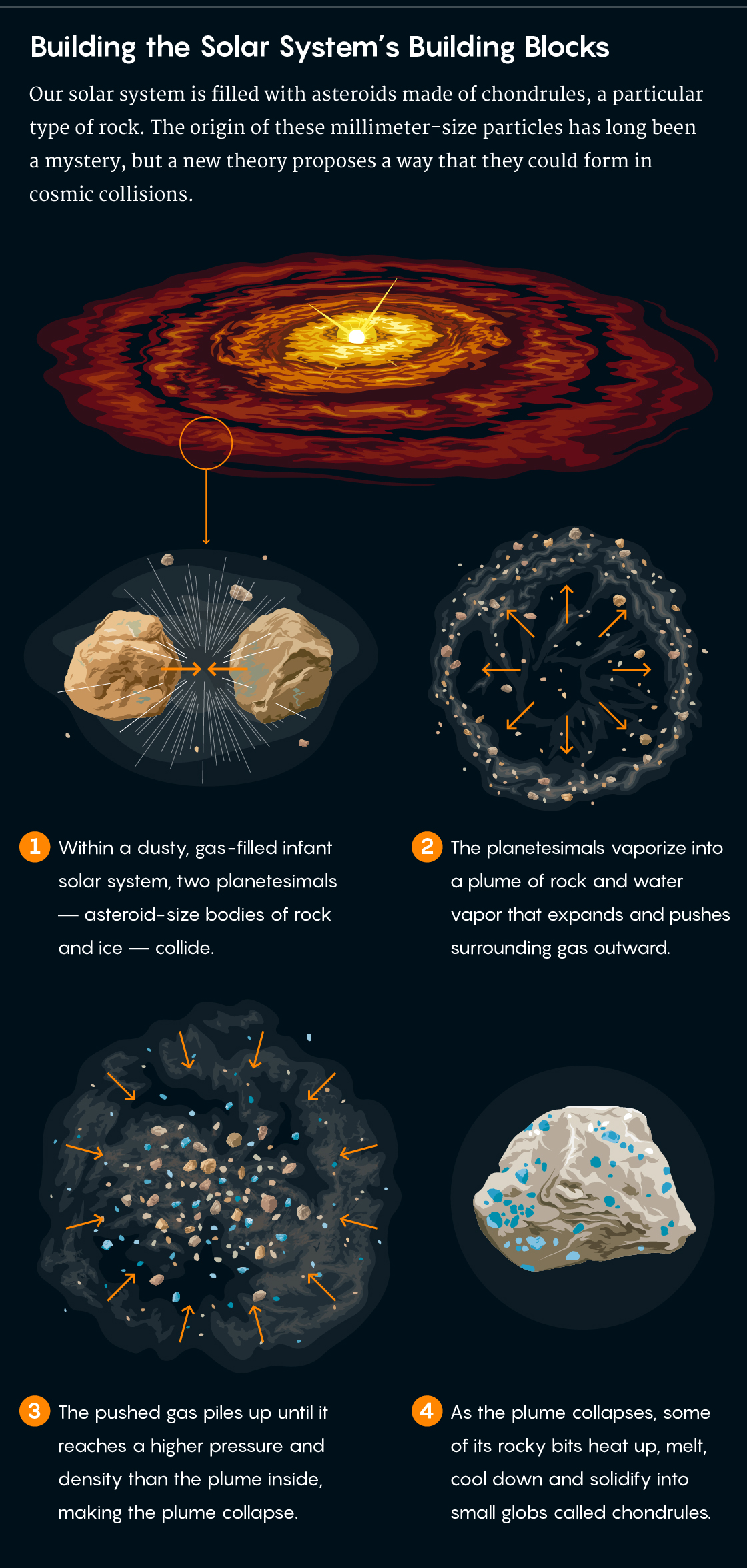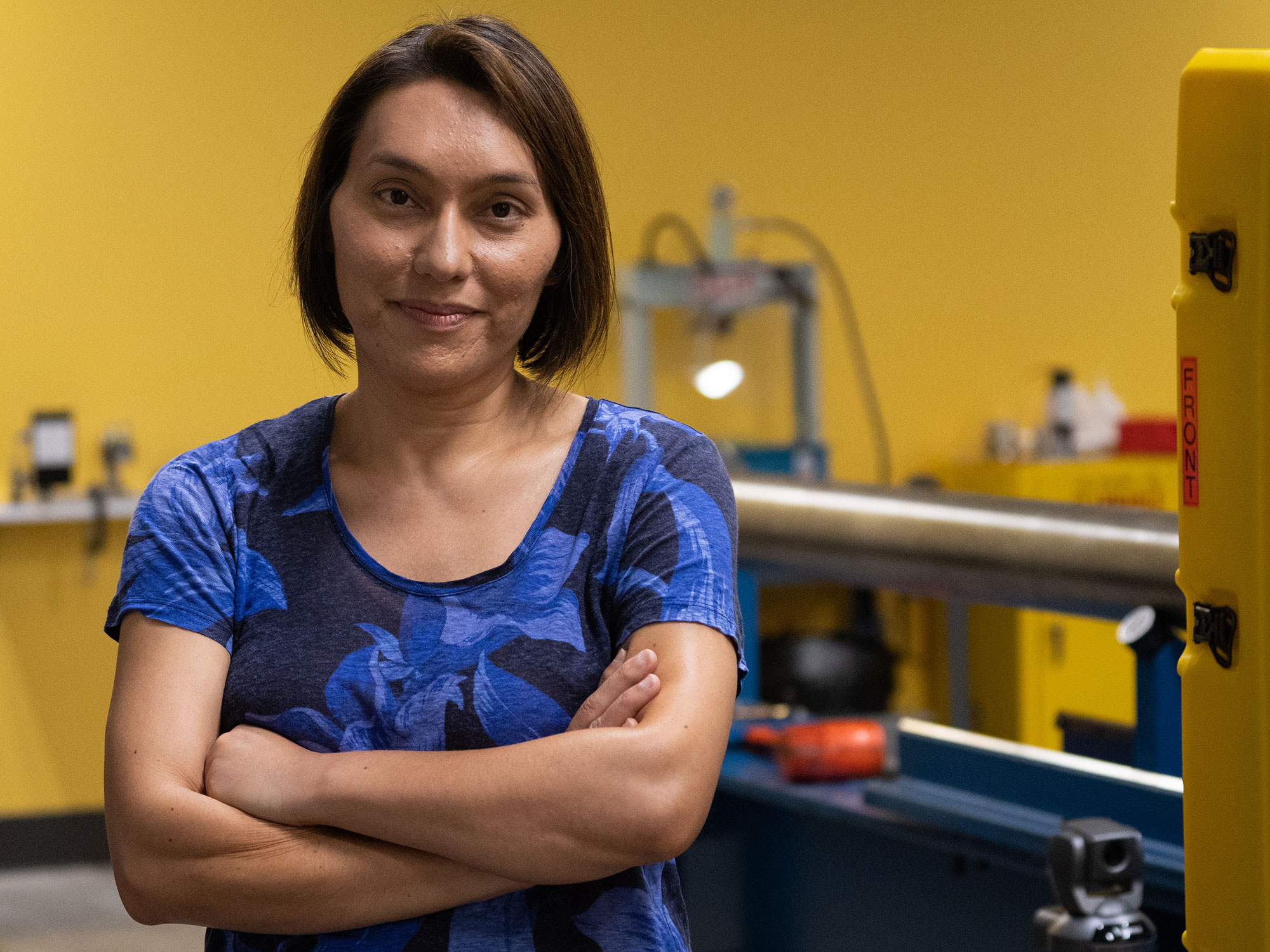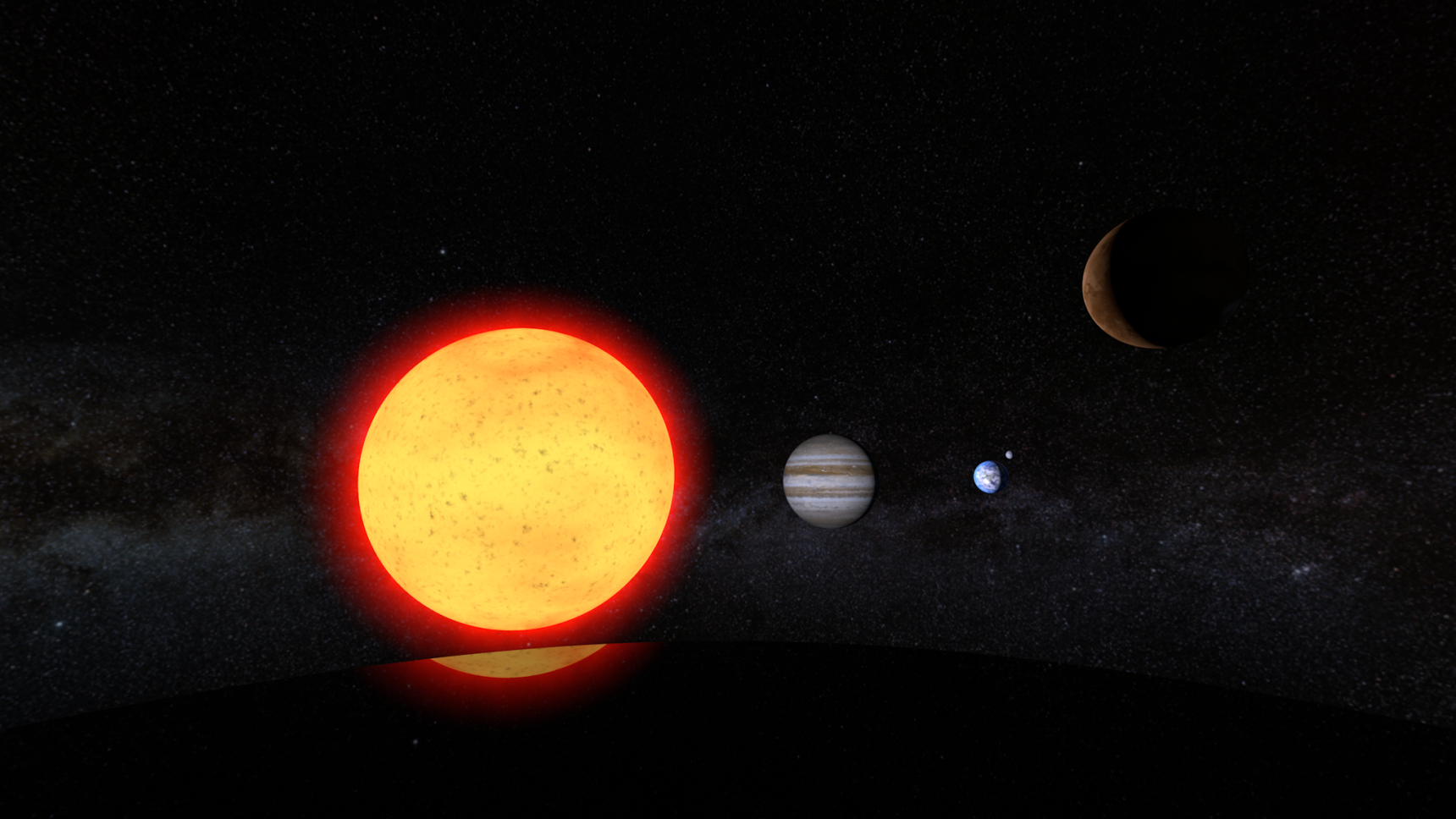Wandering Space Rocks Help Solve Mysteries of Planet Formation

Large rocks streaming through the galaxy may help seed nascent solar systems.
Maciej Rebisz for Quanta Magazine
Introduction
In 2017, a weirdly shaped rock with a strangely erratic orbit swept through the solar system, leaving as quickly as it arrived. Astronomers soon realized that it was not from around here. It punched through the planets’ orbital plane from the top down, like a dart thrown at the concentric rings of a dartboard, and it moved super fast, way too quickly to be caught in the sun’s gravity. It was also extremely dark and seemed oddly elongated, but because it was so speedy, many of its properties will remain forever mysterious.
But it turns out that the object, the first interstellar asteroid ever observed, was not unique. It may not even be all that rare. Astronomers are coming to realize that objects like it may pepper the galaxy, perhaps in such great numbers that they influence the formation of larger worlds, maybe even entire planetary systems — including our own.
The appearance of the asteroid, which has been named ‘Oumuamua, was a dramatic demonstration of a sea change in astronomy: the recognition that the solar system does not exist in a vacuum, at least metaphorically. No planet is an island, and no star forms in isolation. The cosmos is full of stuff that interacts across distances and time spans far greater than researchers have long appreciated, from unimaginably vast jets of gas flowing through interstellar space to ‘Oumuamua-style planetoid crumbs scattered like dandelion seeds in the wind.
This realization is changing the way astronomers think about how star systems form. Researchers who study the birth of planetary systems have not previously considered things like astrophysical gas flows, for instance. “Before, we could just stay in our lane,” said Sarah T. Stewart, a planetary scientist at the University of California, Davis. But as researchers reverse-engineer the recipe for solar systems, they’re now pulling ingredients together from all across the cosmos.
The new ideas sprouting out of this work have begun to offer potential answers to various exoplanetary mysteries. For example, planets appear to hatch much earlier in the life of a star than astrophysicists thought possible. In addition, enormous planets appear to grow out of relatively small amounts of gas and dust — a loaves-and-fishes trick on an astronomical scale. And astronomers are trying to understand the paucity of planets just a little bit bigger than Earth.
All of which points to a stark fact: Planetary scientists still don’t have a bulletproof understanding of how planets get made. Their models are numerous and incomplete. But now, with the burgeoning combination of ideas from some of these disparate disciplines, researchers are starting to get a firmer handle on the planet-making process. “The fact that we haven’t settled on any one thing” for how planets get made, Stewart said, “is because we have learned so many new things.”
A Planet From a Seed
Last year, at a meeting in Switzerland about ‘Oumuamua, Michele Bannister and Susanne Pfalzner sat down together during a coffee break. Pfalzner, an astronomer at the Jülich Research Center in Germany, casually asked Bannister, an expert on planet formation, what would happen if some ‘Oumuamua-like object from interstellar space came through the disk surrounding a young star. “What is the effect of all these things in the disk?” she asked. “What does an interstellar object do if it gets into a protoplanetary disk?”
Bannister, who authored one of the early papers about ‘Oumuamua, thought about it for a minute. ‘Oumuamua is roughly 100 meters long — big enough to make a ripple in a roiling cloud of dust and gas. “We looked at each other, and we thought, ‘This has got to be important,’” Bannister said. The pair started sketching out ideas.
“The more I was looking at this, the more I couldn’t believe someone hadn’t already thought of this,” said Bannister, an astronomer at Queen’s University Belfast.


Michele Bannister (top) and Susanne Pfalzner think that ‘Oumuamua-type space rocks can help explain a few outstanding mysteries about planetary formation.
Michele Bannister (left) and Susanne Pfalzner think that ‘Oumuamua-type space rocks can help explain a few outstanding mysteries about planetary formation.
Ivan Ewart; Courtesy Susanne Pfalzner
In a paper published in April in The Astrophysical Journal Letters, Bannister and Pfalzner argue that rocks like ‘Oumuamua might be catalysts for planet formation. There are probably uncountable billions of such objects sailing through the cosmos, they say. When one intersects with a billowing envelope of gas and dust surrounding a young star, it might cause turbulence and shear that stirs the gas, sculpting it into patterns that later form planets.
In addition, they argue that ‘Oumuamua-like items might move at the right speed to become permanent residents. Infant solar systems could catch great numbers of these interstellar travelers. In their new homes, these immigrants would begin to gather smaller pebbles and dust grains, growing into larger objects. In doing so, they would provide the building blocks for pebble accretion, a theory that explains how large objects can grow very quickly into planets.
“It’s not a huge amount of mass; it’s more their presence in the disk that would trigger it,” Pfalzner said. “It’s a seed stage. You can grow a huge tree, but it always starts from a tiny seed. It’s not the mass of the seed. It’s the potential, if you will.”
Some sort of seed is needed. Recent observations from telescopes such as the Atacama Large Millimeter/submillimeter Array are showing that planets form very rapidly around young stars. This seems odd, based on what astronomers know about planet formation, but it’s possible that interlopers are helping out, Bannister says.
Yet these ideas only come into play if there happen to be a ton of ‘Oumuamua-like objects sailing through the universe. It’s nearly impossible to find them directly — they’re dark and small, untethered from stars, like gnats above the ocean on a moonless night. But many astronomers believe that they’re common.
“If you look at ‘Oumuamua, there is no way it’s the first interstellar visitor to our solar system; it’s just the first one we’ve observed,” said Paul Byrne, a planetary geologist at North Carolina State University. “And there is no way it is the only one, which means there are probably loads of them.”
Recent work argues indirectly that they are indeed common. In 2018, researchers identified eight hyperbolic comets that could have originated around a different star. And in April, Amir Siraj and his adviser, Avi Loeb, an astronomer at Harvard University, argued that a meteorite that burned up in Earth’s atmosphere in 2014 likely came from outside the solar system as well.
“The fact that they offer this means by which you can start to accrete stuff means that this has to be, I think, a plausible thing we need to add into our understanding of how these bodies grow,” Byrne said.
Bannister said the notion of planet seeds could even explain why no one has found extremely ancient planets around the earliest stars in the galaxy. “Maybe in the early history of the galaxy, we didn’t have enough seeds,” she said. “Maybe [the planets] formed more slowly, and potentially with less efficiency.”
Yet if these ‘Oumuamua-like rocks can explain both why planets in the distant past were rare, and why planets today form so quickly, that raises a new question: Where did the first seeds come from?
Cosmic Collisions
Gas and dust swirl around young stars in great, thick disks, which are roiled with turbulence and filled with eddies. Somehow, in a process researchers don’t understand, dust grains in these disks combine to form millimeter-size rock particles called chondrules. These are a major ingredient in the solar system’s most common form of space rock and in chondrites, the most common form of meteorite that falls on Earth.
Since chondrites are common, chondrules must have been a common ingredient when the planets were being forged. They were some of the first solids, and they help date the solar system and its fundamental building blocks. Researchers have some ideas about how chondrules come together to form larger chondrites. But even with today’s best computer simulations and the most fine-grained observations of other planetary systems, there’s no consensus on how chondrules themselves form.
It’s as though the solar system were made of scores of brick houses. Researchers understand the process by which bricks come together to make a house. But what makes the bricks?
Part of the problem is that no model can satisfy all of chondrules’ particular qualities, Stewart said. These tiny igneous blobs must have suddenly melted at temperatures as high as about 2,000 degrees Celsius, an extreme state that the best models of solar system formation have trouble reproducing. Ideas for how chondrules are formed include lightning; chemical reactions resulting in a sort of spontaneous combustion; shock waves from nearby supernova explosions; magnetic fields; collisions of planetesimals such as ‘Oumuamua; gamma ray bursts; and warmth from planetesimals that were still molten from stellar formation processes.
Stewart proposes another possibility. She said that gas flows caused by violent, vaporizing collisions can shove together the smallest droplets of molten rock, which begin to combine. The idea is unique in that it combines astrophysics with planet formation processes in ways researchers have not done before.

5W Infographics for Quanta Magazine
Stewart studies a strange new planetary phase called a synestia, which she and Simon Lock, a planetary scientist now at the California Institute of Technology, proposed in 2017 to describe the formation of the moon. A synestia is a bloated, swollen cloud of vaporized rock shaped like a puffy bagel. In a synestia, the material that made the Earth and moon would have thoroughly mixed.
While fiddling with some of her code, Stewart realized that something similar could drive the precursors of chondrules together so they can combine, like pebbly biscuit batter that eventually forms a cohesive dough.
The process would start with planetesimals, primordial pieces of rock surrounding the young sun. They might be interlopers like ‘Oumuamua. Alternatively, they might have formed very soon after our star was born. Whatever their origin, they would be plentiful, and they would collide with each other inside the gas-filled solar nebula, in a billiard game of mutual assured destruction.
When these primitive planetesimals collided, they would vaporize, and their vapor would expand into the still-hot solar nebula. This vaporization would happen with such heat and force that it would create a bow shock, similar to how an airplane causes a sonic shock wave when it blows through the sound barrier. The bow shock would push the nebula gases out, creating a central area of low pressure. Then, as the vapor plume collapsed to fill this area of low pressure, the gas flows would shepherd together the droplets of vaporized rock. The vapor plume expansion and its subsequent collapse would create droplets of silicate that are consistent with the sizes of chondrules.
“You need gas to blow the pebbles together, so they can collide and combine,” Stewart said.

Sarah Stewart’s latest work incorporates many messy details of the planetary formation process that often get left out.
Photo by John D. and Catherine T. MacArthur Foundation
This all happens in a flash — over days to weeks, barely a breath on planetary timescales. But this transient, violent process is apparently crucial to how our solar system formed, Stewart said. She points out that the role of nebular gas, and how it interacts with vaporized rock, was unrecognized before.
“When I was working on it, I kept looking at it and going, ‘Oh, I broke the code!’ Then, ‘No, wait! That’s real physics,’” she said. “There were crazy things we had never seen before, because no one had put in the gas.”
She presented her early findings at the Lunar and Planetary Science Conference in Houston in March, but her results are not yet published.
But for her chondrule-generating ideas to work, Stewart still needs an initial seed — the planetesimals that destroy each other to make chondrules. Where these seeds come from is a question for later research, Stewart and her colleagues say. Maybe the solar system was full of ‘Oumuamua-esque seeds passing through — just as Bannister and Pfalzner suggest could be happening among the newer generation of planets.
Still, Stewart said she has gotten an “aha response” to the work. “This is a discovery in the pure sense. It’s got that feels-right aspect to it,” she said.
Cosmic Connections
Stewart’s work on chondrules and Bannister and Pfalzner’s ideas about planet formation are part of an emerging understanding that even in space, everything is connected. “You have to go through a huge amount of different fields in astrophysics,” Pfalzner said: “the interstellar medium, molecular clouds, formation of stars, the disks around them, the formation of planets.”
Data from future observatories like the Large Synoptic Survey Telescope (LSST) could intensify the need to think across many different size scales. The LSST might be able to resolve tiny pebbles in our solar system, allowing astronomers to search for more ‘Oumuamua-like objects. “I think it’s really, really exciting if our solar system is chock-full of these interstellar fragments that have come from other solar systems, that there are bits of other solar systems floating around,” Byrne said. “LSST is going to open this whole new world,” one that connects our solar system to other solar systems throughout the cosmos across time and space.
Said Bannister, “The implications are so much fun.”






